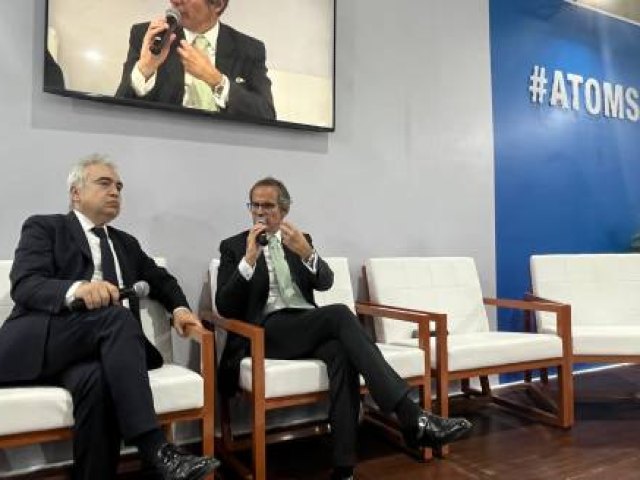 Image credit: IAEA
Image credit: IAEA
“Nuclear power is making a comeback—and in a strong fashion.” So said IEA executive director Fatih Birol on the renewed interest in nuclear power across the globe.
Birol, executive director of the International Energy Agency (IEA), spoke during a discussion on nuclear power at COP27, focusing on its potential to help achieve net zero emissions.
The discussion was led by IAEA Director General Rafael Mariano Grossi at the #Atoms4Climate pavilion, the first-ever nuclear-themed pavilion in the history of the United Nations Climate Change Conference.
Even though the nuclear power sector is gaining momentum, Birol emphasised that the international financial community had so far failed to provide the level playing field needed for nuclear to help the world tackle its most pressing challenges.
According to the IAEA, countries around the world are showing renewed interest in nuclear power to ensure a secure supply of low emissions energy, including those that previously had sought to phase out the technology.
“Countries that were saying goodbye to nuclear power, they are rethinking their plans,” Birol said, adding that the IEA had been engaged in talks with both Belgium and Germany. “We are very happy that both governments are now in the process of postponing their nuclear phase-out plans, understanding the role that nuclear plays in addressing this energy security challenge,” he said.
A number of countries are looking to extend the lifetimes of their reactors, while others are investigating new builds, such as the Netherlands and Poland as well as Japan and South Korea.
The UAE has also added nuclear to its energy mix, having put three large reactors online in recent years and soon to complete construction of a fourth, which together will provide 25% of the country’s electricity.
According to the IEA, nuclear power capacity needs to double by 2050 if net zero goals are to be achieved. However, it is critically important that projects are delivered on time and within budget, said Birol.
Innovation must also play a big role, with small modular reactors (SMRs) potentially broadening the options for more countries including in the developing world to use nuclear power as a backbone for low carbon energy systems with high shares of variable renewables like solar and wind, he added.
Financing will be a key challenge for such projects, said Kathryn Huff, assistant secretary for Nuclear Energy at the US Department of Energy. “Export financing will be required,” said Huff, adding that “aggressive engagement on all sides if we are going to get things built on time”.
Several other countries, such as Poland and the United States, are looking to nuclear as a replacement for coal, including at or near the site for former coal-fired plants.
“In Poland, when you talk climate transformation, you mean energy transformation,” said Sebastian Barkowski, Poland’s special envoy for International Climate and Energy Cooperation. “Nuclear has to find a place in the very demanding and long-term process of the energy transition and climate transition, which we have to pursue for the years to come.”
He also noted that flexible SMRs could mark a breakthrough for the way nuclear power works and helps decarbonise economies. By siting SMRs close to sources of emissions, such as fertilizer factories or steel mills or for hydrogen production, they can decarbonise those industries directly through the provision of low-carbon heat.
